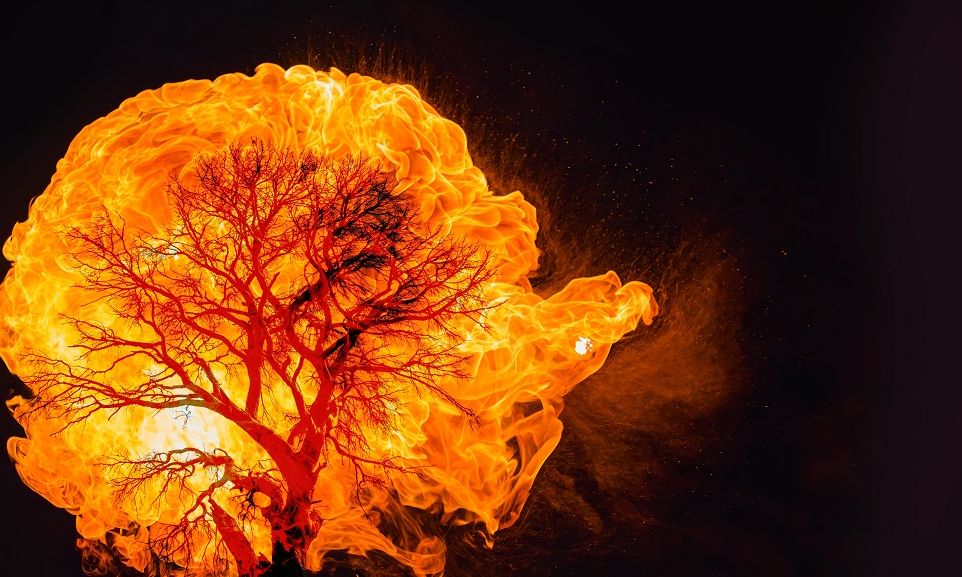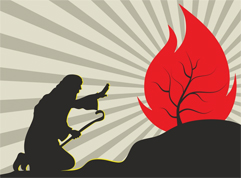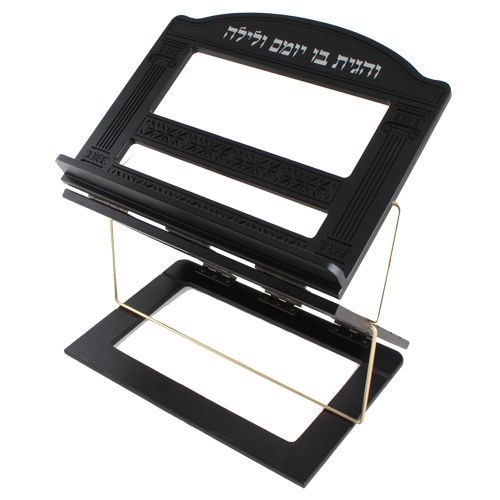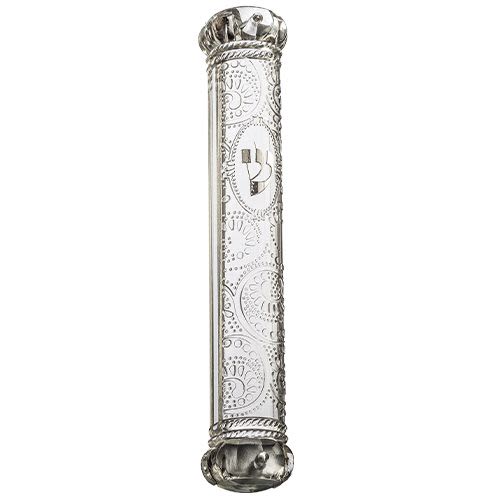
Shemot: Where the Baal Teshuvah Stands
BT's don't have an easy life. Their soul corrections are frequently excruciating, but that is Hashem lovingly purifying them for their ultimate benefit...

“…and behold, the bush was burning in the fire but the bush was not consumed” (Exodus 3:2).
Why did Hashem reveal Himself to Moses in a simple desert sagebrush? Also, what’s the inner message of the bush that burns but is not consumed?
The desert is characterized by a harsh climate – searing hot days and freezing nights. Its terrain is difficult and it’s the home of many dangerous creatures such as snakes, scorpions, and jackals. But at a deeper level, the desert is a place of magnificent beauty. It’s an ideal place for those who seek Hashem, far from the noise of the city, distractions and the physical pleasures of this world. It turns out that the difficulties of the desert are not a deterrent to those who want to find Hashem, those who are willing to live with the barest basics and shun the amenities of society. That’s exactly the sagebrush: it’s a minimalist plant with no frills and not at all pretentious. It’s utter simplicity, the humblest of shrubs. As such, the sagebrush is the symbol of humility. “Rebbe Yochanan says, anywhere that you find the Holy One’s might, you find His humility.”[1] It’s therefore natural that Hashem should choose to reveal Himself within the sagebrush.
 The sagebrush has one additional important quality. As opposed to many other trees, bushes, and plants: it can exist with virtually no water and can withstand extreme temperatures and strong desert winds. If they had to stand alongside the sagebrush, other plants would wither long ago.
The sagebrush has one additional important quality. As opposed to many other trees, bushes, and plants: it can exist with virtually no water and can withstand extreme temperatures and strong desert winds. If they had to stand alongside the sagebrush, other plants would wither long ago.
The comparison between a beautiful flowering bush and the utterly plain and thorn-laden sagebrush is similar to the comparison between a religious-from-birth Torah scholar and a baal teshuva (BT), one who “returned to Hashem” despite his or her secular upbringing. The sagebrush isn’t nearly as beautiful as the flowering shrub from the greenhouse. In like manner, the BT lacks the refinement and the Torah flavor of a scholar who was educated and raised in holiness. But there’s a downside: just as it’s dangerous to remove an elegant orchid from the ideal conditions of the greenhouse, for it will wither if the temperature, humidity, and ventilation are not ideal, the Torah scholar thrives as long as he is in his “greenhouse” – the Yeshiva or Kollel. Once he’s exposed to the outside world, he’s in danger. Maybe the BT isn’t as refined as the FFB (frum from birth) Torah scholar, but the BT is strong in his convictions inside the study hall and outside as well. He’s the sagebrush that survives in any conditions.
Just as the orchid can’t grow and thrive where the sagebrush does, the FFB can’t survive where the BT can. With this in mind, we can understand what our sages say in the Gemara, “In the place where baalei teshuva stand, perfect tzadikim cannot stand.”[2] This explains why Hashem tells Moses to remove his shoes:[3] Hashem seems to be telling Moses that even though he’s a perfect tzaddik, he can’t stand in the place of the sagebrush, which symbolizes the BT. Hashem therefore burns His holy fire within the sagebrush, to show His special affinity for the baal teshuva.
BT’s don’t have an easy life. Their soul corrections are frequently excruciating, but that is Hashem lovingly purifying them for their ultimate benefit, in this world and especially in the next. On the other hand, Hashem gives them an extra measure of siyata d’shmaya, assistance from Above, to withstand their difficult challenges in life. Their tribulations are like a burning fire. As such, the BT is exactly the phenomenon that so intrigued Moses as he approached the burning bush: how can the bush burn, yet not be consumed? This is the metaphor of the BT – he or she burns with tribulations yet keeps on living, just like the burning bush.
Hashem wants all of our hearts to be burning bushes – to be humble and to burn with desire for Hashem. That way, the burning bush glows forever.











12/28/2015
This takes alot of pressure off!
I always feel a bit of shame when I struggle so, to be refined, and modest! Now, I understand that I should not expect it to come easily or naturally- that I must desire to work and work on it, and that Hashem understands, and gives me a little extra help! Good bye Shame, hello, Hashem!!
12/28/2015
I always feel a bit of shame when I struggle so, to be refined, and modest! Now, I understand that I should not expect it to come easily or naturally- that I must desire to work and work on it, and that Hashem understands, and gives me a little extra help! Good bye Shame, hello, Hashem!!